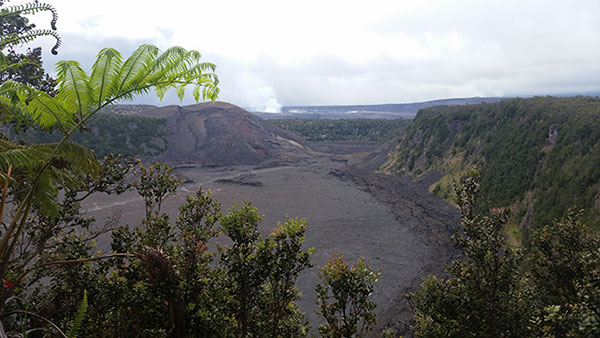Last updated: August 19, 2019
Lesson Plan
The Ever-Changing Landscape: Grade 4

- Grade Level:
- Upper Elementary: Third Grade through Fifth Grade
- Subject:
- Science,Social Studies
- Lesson Duration:
- 90 Minutes
- State Standards:
- State: Hawai‘i
Subject: Social Studies and Science
Grade Level 4
State standards HI.3: SS.4.3.10, HI.3: SC.4.3.1, SC.4.3.2, SC.4.5.3, SC.4.8.1 - Additional Standards:
- Grade Level 4
Subject Area: Reading informational Texts
Common Core Standards: CCSS.ELA-Literacy.RI.4.7, CSS.ELA-Literacy.RI.4.10 - Thinking Skills:
- Remembering: Recalling or recognizing information ideas, and principles. Understanding: Understand the main idea of material heard, viewed, or read. Interpret or summarize the ideas in own words. Applying: Apply an abstract idea in a concrete situation to solve a problem or relate it to a prior experience.
Essential Question
How do you recognize change on this volcanic landscape?
Objective
Students will be able to see and describe how volcanic eruptions change the landscape and how in time new growth emerges and life becomes abundant again.
Program Duration: 90 - 120 minutes
Background
Some background knowledge of biodiversity, adaptive radiation, island ecology, volcanism on shield volcanoes, Hawaiian traditional beliefs, some native Hawaiian rainforest species, and tectonic plate theory would all be useful.
Preparation
Students should be prepared for inclement weather. Students should wear rain gear, sunscreen, closed-toe shoes with good ankle support, and plenty of water. Students should be made aware of the hazards encountered on a rainforest trail in a volcano (eg. Mud, cliffs, steep terrain, etc.).
Materials
PDF Format
Download Printable Lesson Plan
Lesson Hook/Preview
Pre-site activities including videos are included on page 3 of the curriculum.
Procedure
1. Complete pre-site activities.
2. Arrive at the Kīlauea Iki Overlook.
3. Explain safety and guidelines to students before descending into Kīlauea Iki crater. Pass out
identification guides for scavenger hunts (see curriculum).
4. Hike into Kīlauea Iki crater using scavenger hunt activity.
5. At the bottom of the crater, identify geologic features showing previous activity.
6. Identify the connection of native Hawaiian cultural relationships with these geologic features and
the processes of forest succession on the land.
7. Return to bus.
8. Complete post-site activities
Vocabulary
Biodiversity: the variety of life in a particular place.
Carbon Dioxide: a colorless, odorless, gas found in our
atmosphere. CO2, 1 carbon atom bound to 2 oxygen atoms.
Cinder: Rough particles of hardened lava, formed when gas-charged lava erupts from a vent under pressure blows violently into the air.
Climate: the normal weather conditions of a place.
Crown: The branches and leaves of a tree or plant.
Ecosystem: a community of interacting organisms and their environment.
Extinction: when a particular kind of living thing no longer exists.
Greenhouse gasses: various gasses that trap heat in the atmosphere, when there are too many of these gasses in the atmosphere they can make the Earth’s climate warmer.
Kapa: traditional Hawaiian fabric made from pounding bark from certain kinds of trees.
Keystone Species: a species in an ecosystem that many other species depend upon to survive. If this species were to disappear, the ecosystem could possibly collapse.
Magma: molten rock.
Mālama: to take care of someone or something.
Mālama ‘āina: to take care of the land.
Mele Oli Komo: a chant requesting entrance.
Organism: a general term for any kind of living thing, plants, animals, bacteria, fungi, etc.
Pith: the spongy tissue in the stems of many plants.
Pulu: silky hair-like fibers that cover young Hapu’u tree fern fiddleheads.
Spatter cone: a steep-sided volcanic cone built up of volcanic rock materials ejected from a fissure or vent.
Stomata: (plural of stoma) the tiny pores in the leaves of plants which allow them to “breathe”.
Tephra: solid matter ejected by erupting volcanoes.
Vent: an outlet of a volcano that allows magma to flow out.
Vesicles: a tiny sac or cavity containing fluid or gas.
Watershed: An area of land that is the water source for streams, rivers, and other fresh water bodies.
